Idea by
Silvana De Bari, Valerio Di Festa, Stefania Iraci Sareri
COPA
Call for ideas 2021
Through the rooms into a diorama
Through the rooms into a diorama
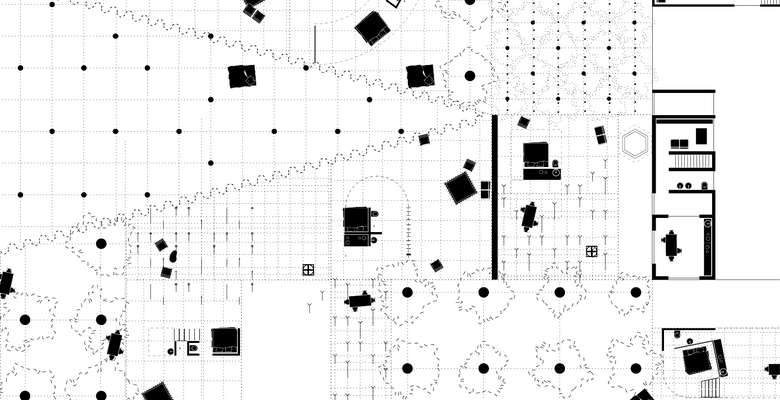
- Systemic changes
The research inquires into how tourism is able to rewrite a territory developing the tourist domestic space in its possibility of expansion and contraction in a continuous landscape.
The design process is articulated into three actions:
The establishment of a map that aims to visualize the smooth and independent movements of new non-resident populations capable of affecting the territory and modifying its edges.
The construction of a spatial pattern in which infrastructural green can aspire to multiple and heterogeneous configurations. Nature becomes an infrastructural matrix capable of gathering spaces together and a scenario for practices of contemporary living.
The development of the minimum units of the tourist domestic space which create a continuous landscape in a habitat dictated by natural rhythms.
The project is used to interpret some of the contemporary emergencies: climate change, the simultaneous impact of migratory flows and the relationship between man and nature.
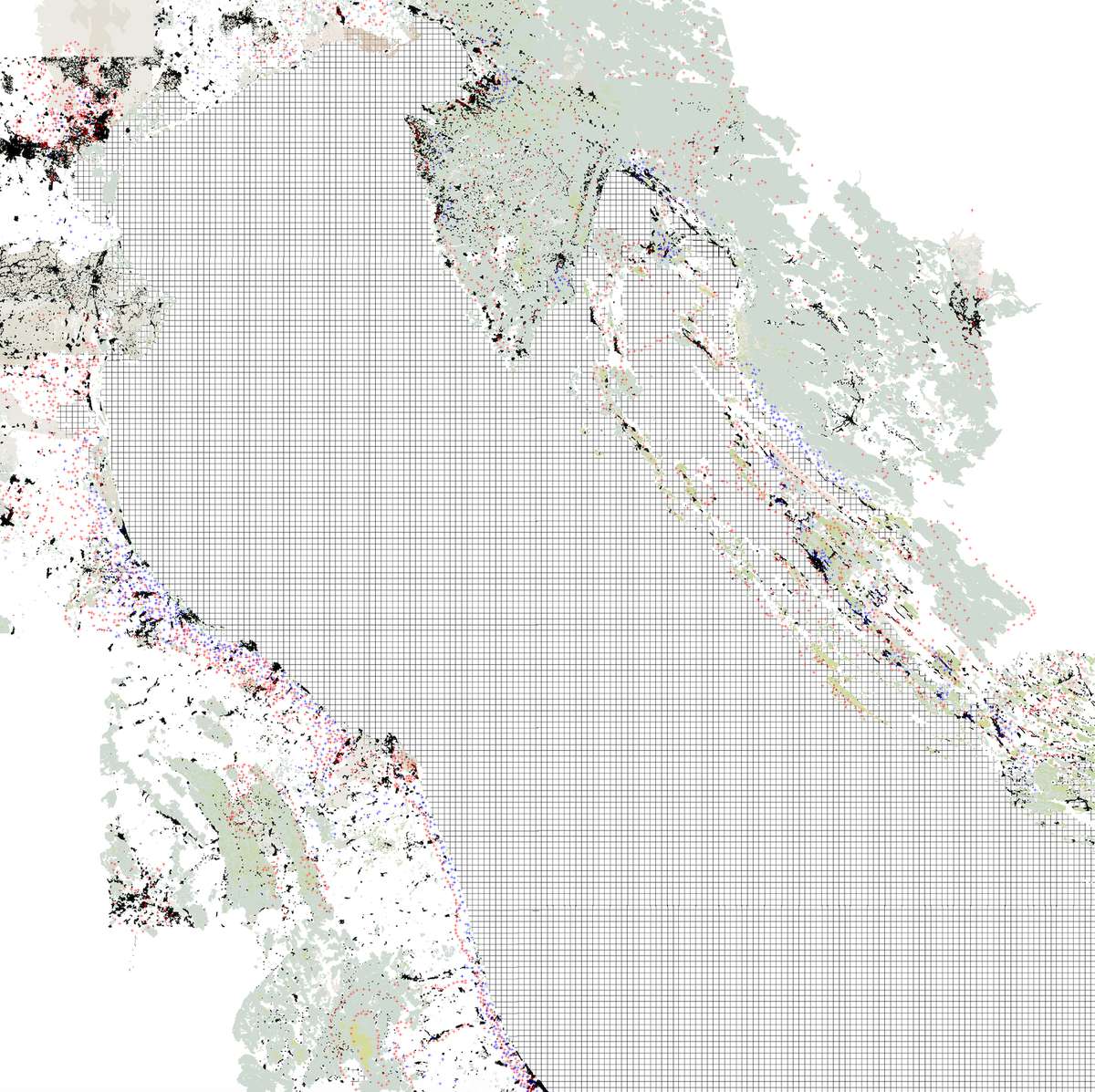
SEVERAL TOURISM VS UNCONTAMINATED AREA The map describes the settled and no- settled touristic flows related to
the settlement fabrics and the natural areas.
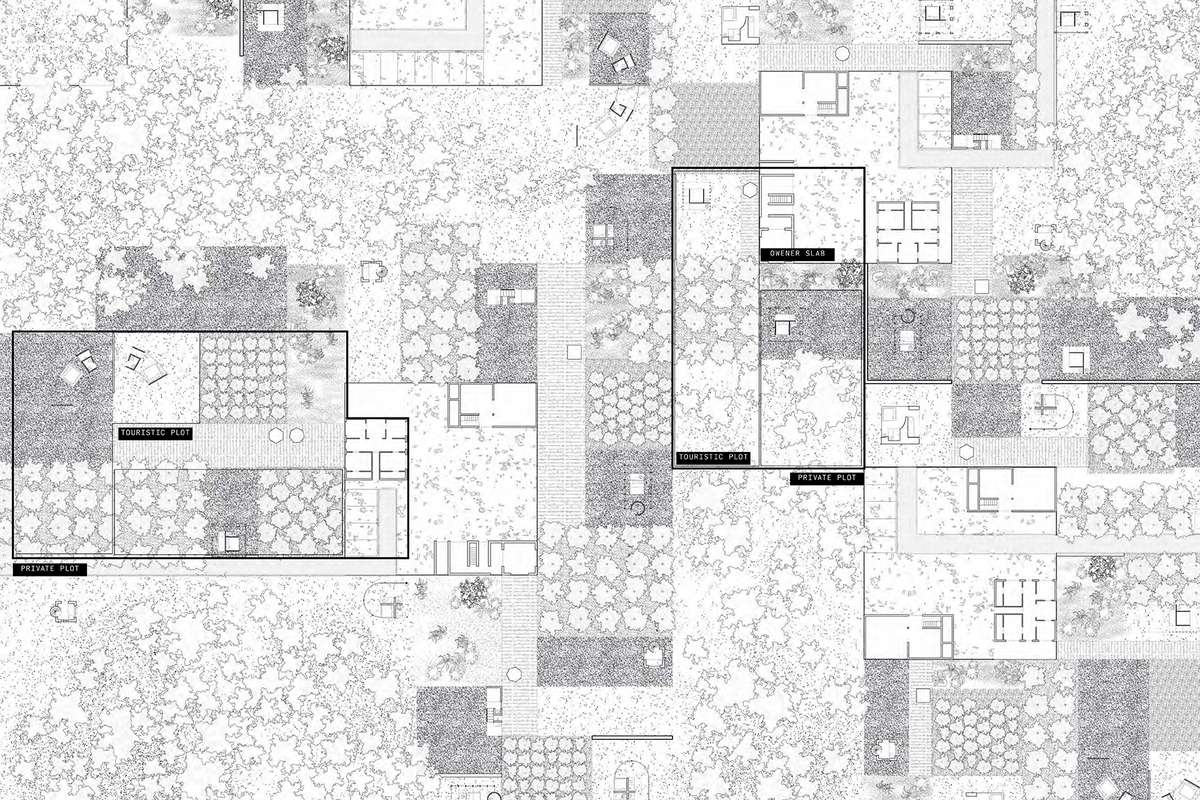
The proposed pattern aims to redefine new relationships between man and landscape. Nature, with its rhythms and necessities, becomes an infrastructural matrix capable of gathering spaces together and becoming a scenario for practices of contemporary living.
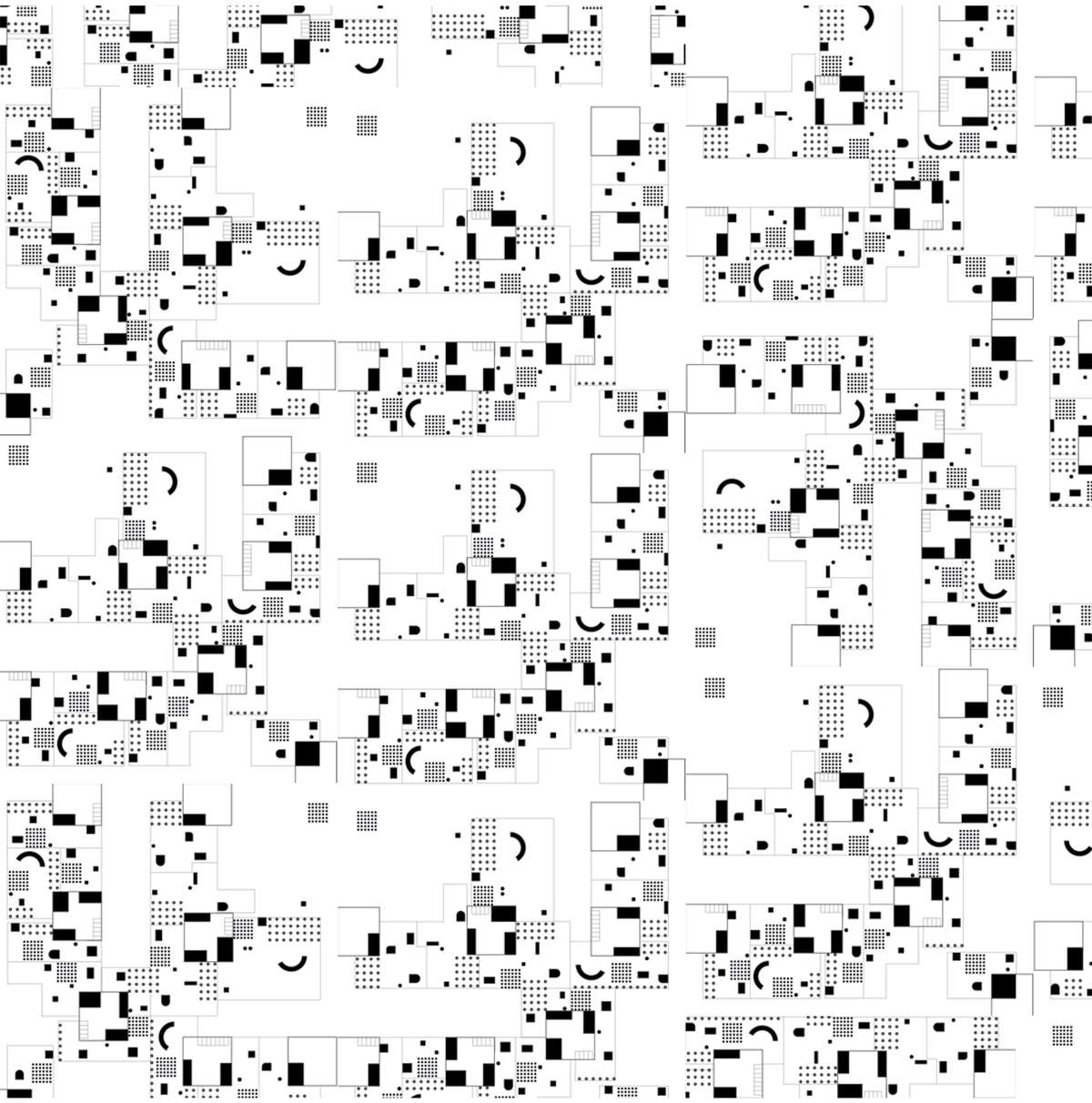
An isotropic body is a body that has the same properties in all possible di- rections. The use of the concept of isotropy for the description of the proposed spatial pattern emphasizes the uniformity and the apparent hierarchical absen- ce of the vegetal dowel that make up the green infrastructure.
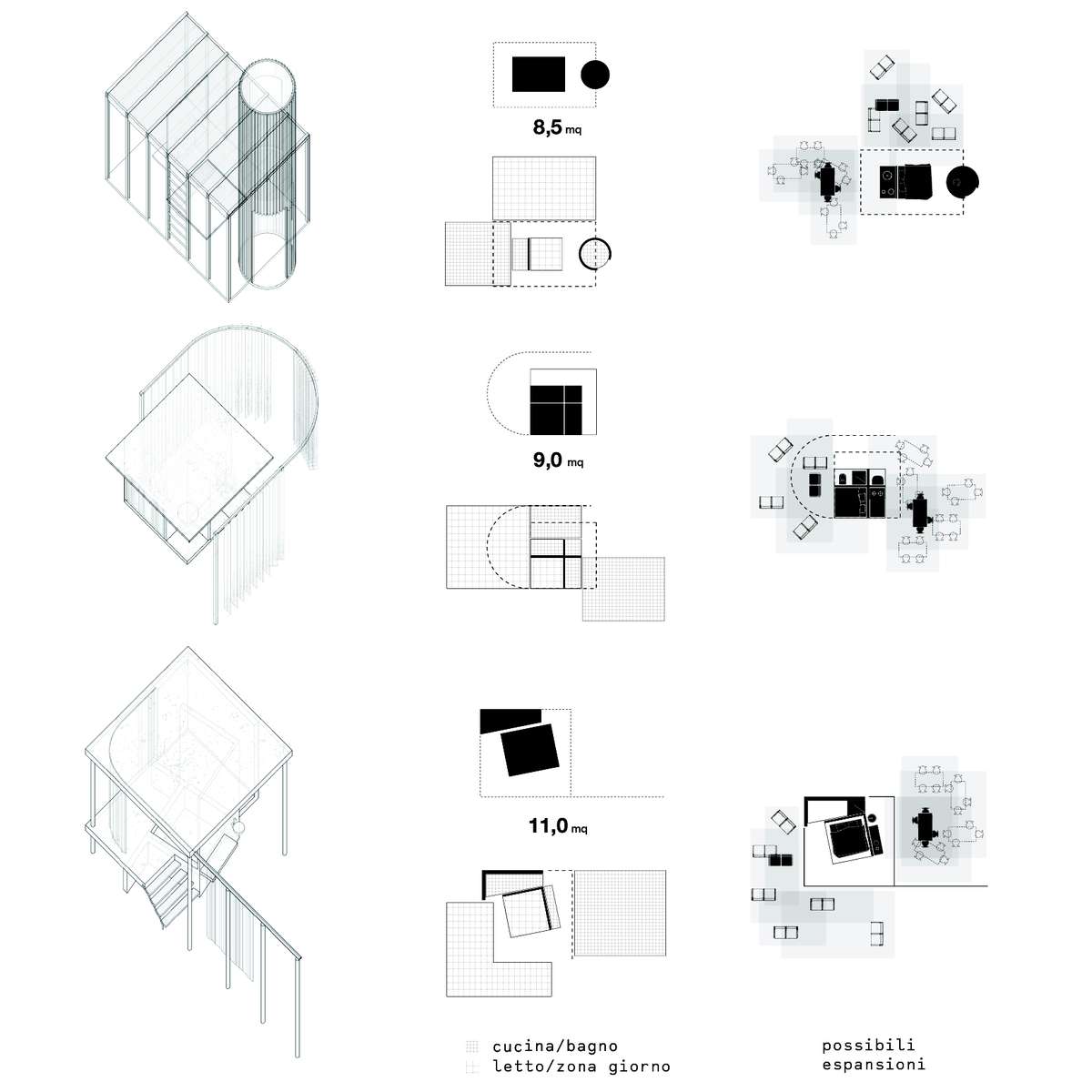
resize the oversize. Domestic space is re-conceptualized, reduced only to necessarily private space. The minimum units are formed only by the essential services: each cabin has a core consisting of toilet, shower, hob and bed.
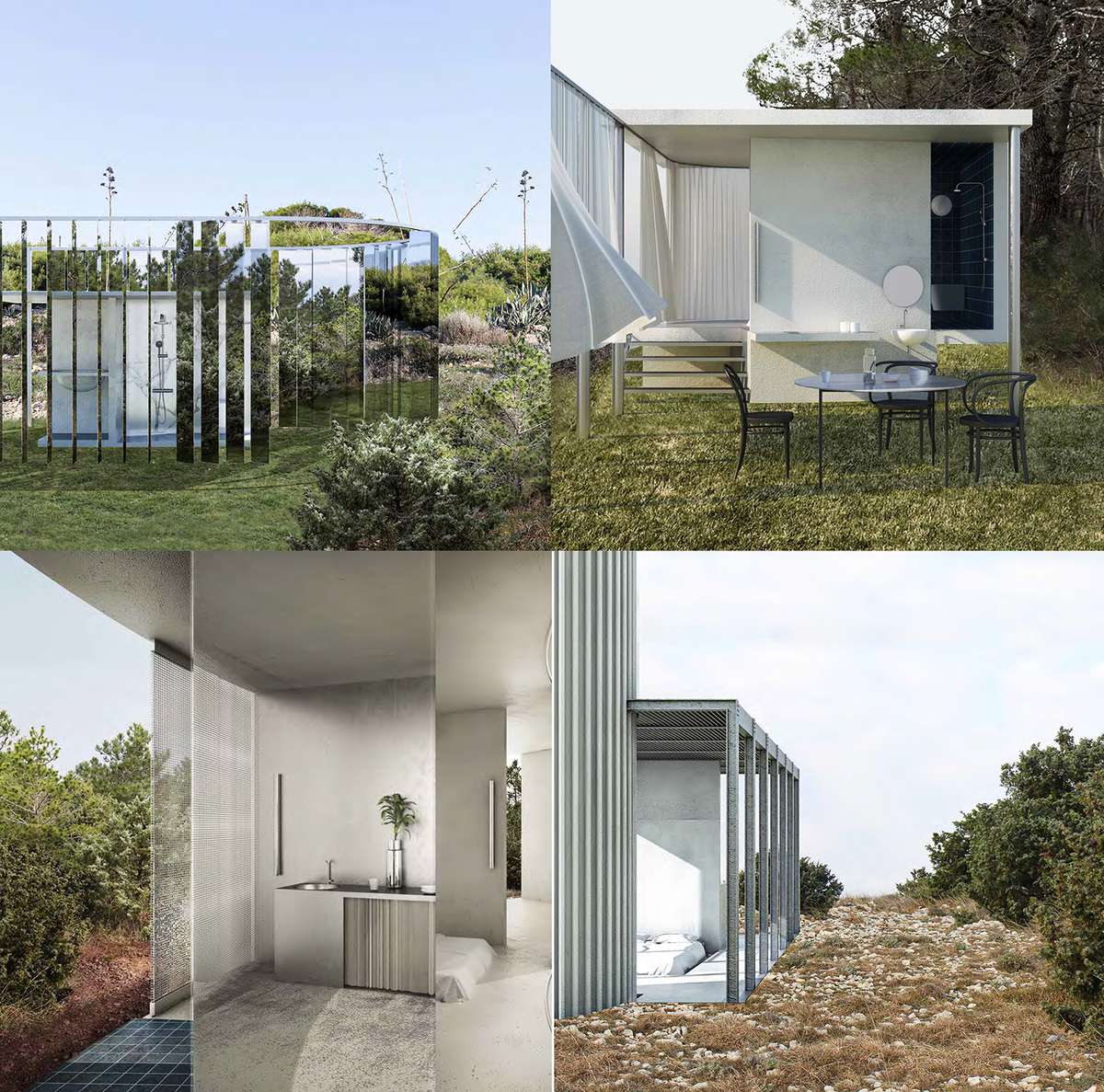
the rooms of life are no longer built from walls.
the minimum unity is what cannot be separated from constructed elements, the rest is nature. Able to accommodate the practices of living.
Slender and delicate elements give man the possibility to extend the space of the house wherever they want and in any way.
Through the rooms into a diorama
Through the rooms into a diorama

- Systemic changes
The research inquires into how tourism is able to rewrite a territory developing the tourist domestic space in its possibility of expansion and contraction in a continuous landscape.
The design process is articulated into three actions:
The establishment of a map that aims to visualize the smooth and independent movements of new non-resident populations capable of affecting the territory and modifying its edges.
The construction of a spatial pattern in which infrastructural green can aspire to multiple and heterogeneous configurations. Nature becomes an infrastructural matrix capable of gathering spaces together and a scenario for practices of contemporary living.
The development of the minimum units of the tourist domestic space which create a continuous landscape in a habitat dictated by natural rhythms.
The project is used to interpret some of the contemporary emergencies: climate change, the simultaneous impact of migratory flows and the relationship between man and nature.

SEVERAL TOURISM VS UNCONTAMINATED AREA The map describes the settled and no- settled touristic flows related to
the settlement fabrics and the natural areas.
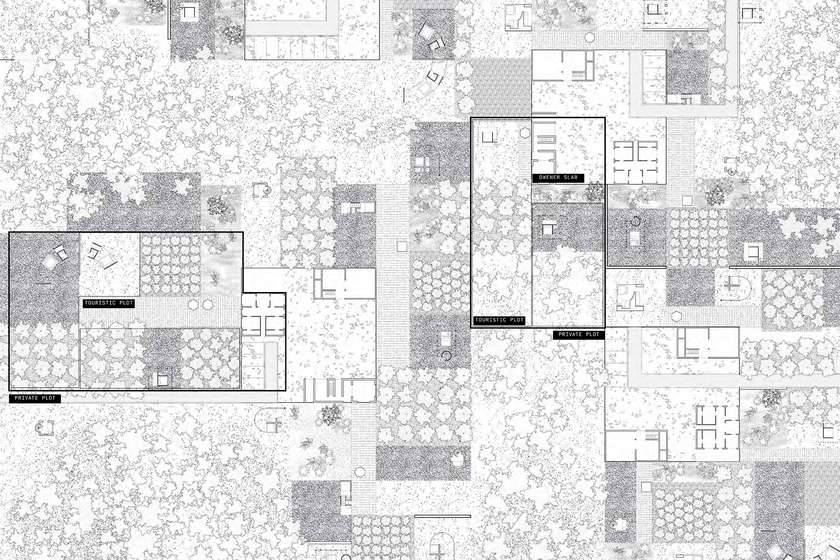
The proposed pattern aims to redefine new relationships between man and landscape. Nature, with its rhythms and necessities, becomes an infrastructural matrix capable of gathering spaces together and becoming a scenario for practices of contemporary living.
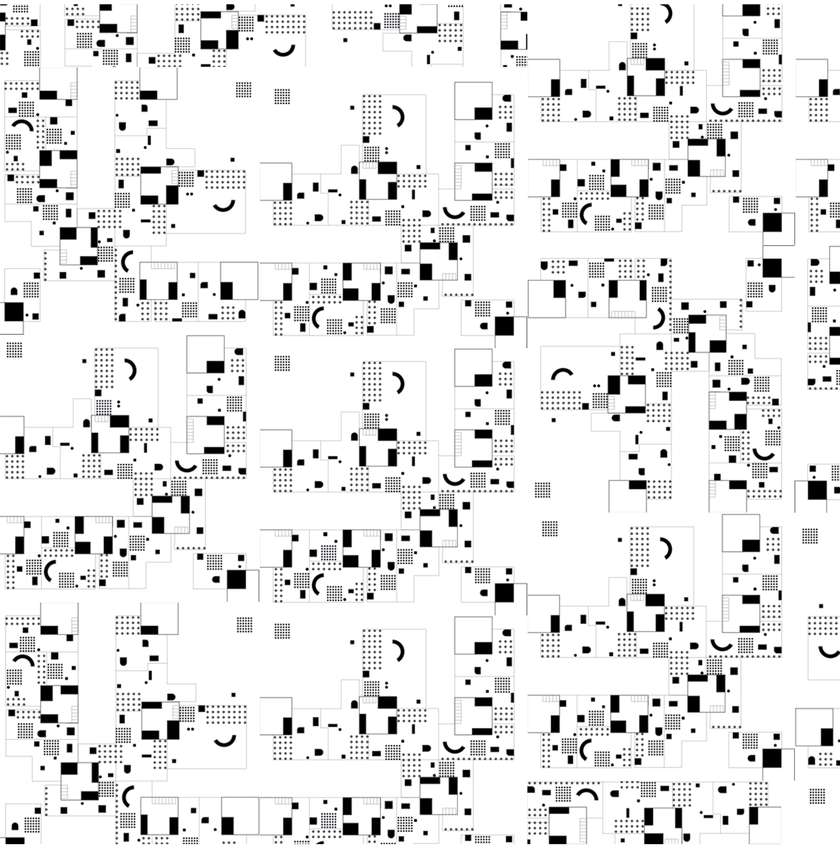
An isotropic body is a body that has the same properties in all possible di- rections. The use of the concept of isotropy for the description of the proposed spatial pattern emphasizes the uniformity and the apparent hierarchical absen- ce of the vegetal dowel that make up the green infrastructure.
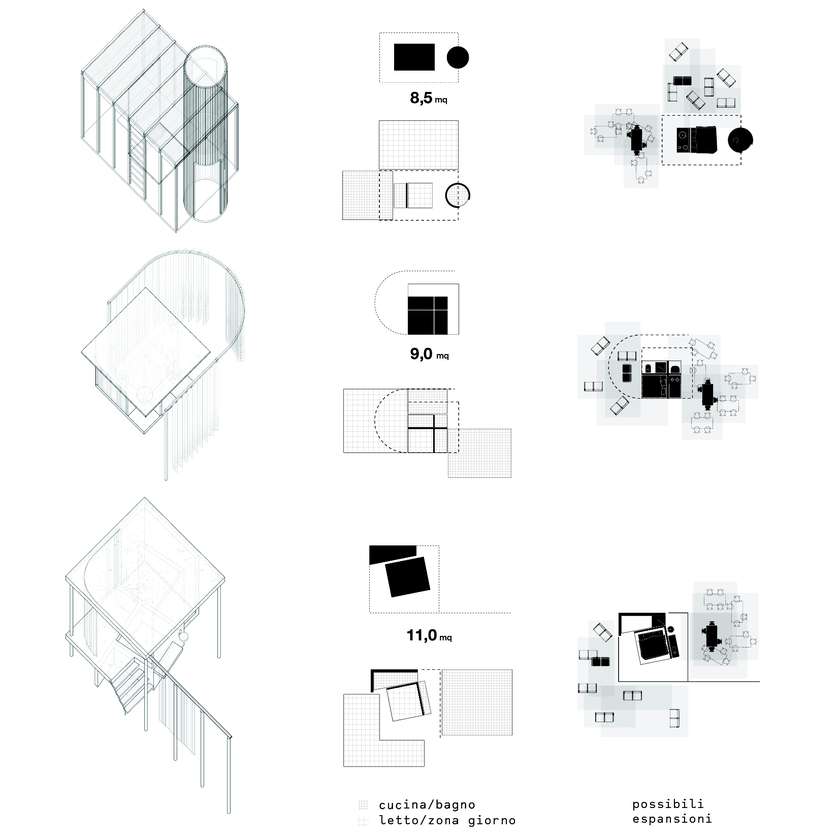
resize the oversize. Domestic space is re-conceptualized, reduced only to necessarily private space. The minimum units are formed only by the essential services: each cabin has a core consisting of toilet, shower, hob and bed.
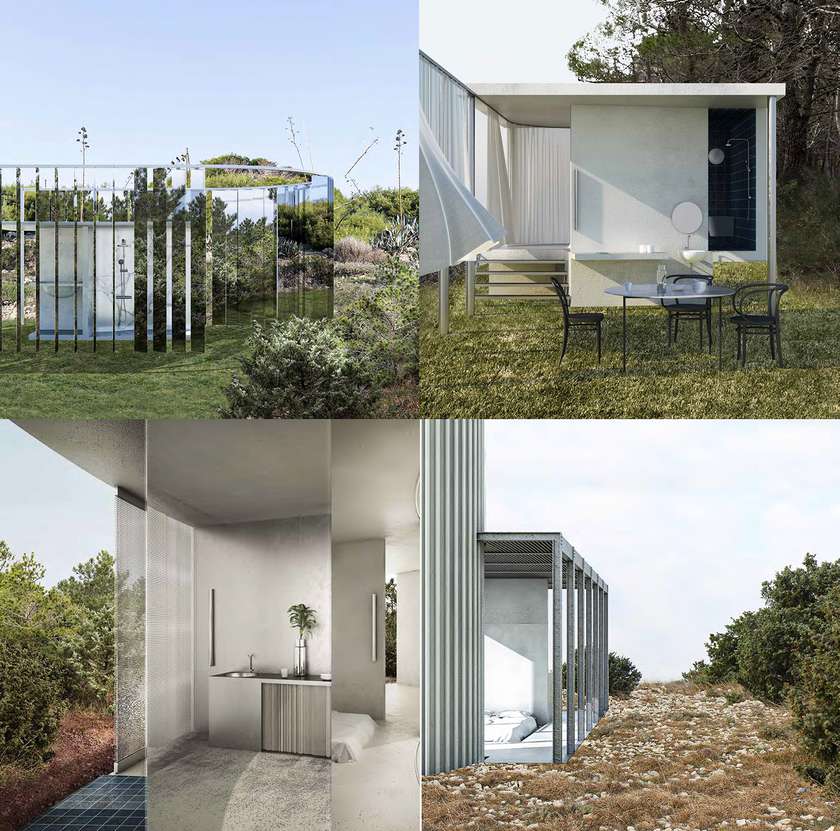
the rooms of life are no longer built from walls.
the minimum unity is what cannot be separated from constructed elements, the rest is nature. Able to accommodate the practices of living.
Slender and delicate elements give man the possibility to extend the space of the house wherever they want and in any way.